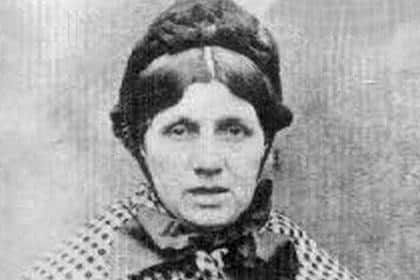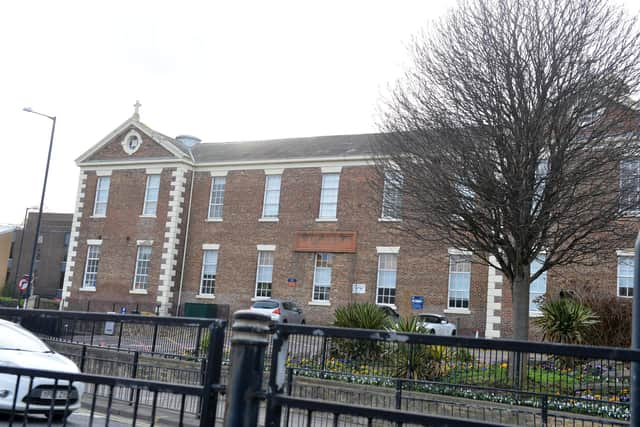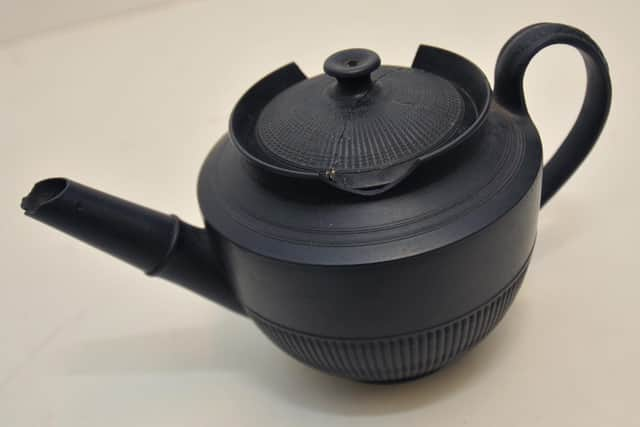True crime Sunderland: The story of Mary Ann Cotton, the nurse dubbed 'Britain's first female serial killer'
and live on Freeview channel 276
A lesser known fact is that she was only ever convicted of one murder. In 1873 that was enough to send her to the gallows and this solitary crime is bad enough. But has history treated her harshly by regarding her as a serial killer?
Considerable circumstantial evidence suggests almost certainly not. She may have murdered as many as 21 people.
Early life


Advertisement
Hide AdAdvertisement
Hide AdShe was born Mary Ann Robson in, according to differing sources, either Low Moorsley or Murton, both County Durham in October 1832. Predictably, her childhood was unhappy.
The Robsons were hard-up and her father Michael, a miner and religious maniac, was brutal with Mary and her brother Robert, lest his children should turn out to be wrong ‘uns. Michael was killed, falling down a mine shaft when Mary was 14, but she probably wasn’t exactly heartbroken.
Her mother remarried, but Mary also hated her step-father, Robert Scott. However, he was a higher earner than her father had been and she rather liked that; a telling and important character trait.
Aged 16, she became a nurse in South Hetton, retraining as a dressmaker three years later. At 20 she had moved to Devon with her husband William Mowbray, a timekeeper. They had five children.


The killing begins
Advertisement
Hide AdAdvertisement
Hide AdHer first murders probably took place in Plymouth. By the time the Mowbrays had settled back in Hendon after five years in Devon, four of their offspring had died.
She then had another three children, all of which were deceased by 1865, as was their father purportedly from gastric fever, an ailment with symptoms similar to arsenic poisoning.
Consequently Mary, as luck would have it, clicked a £35 insurance payment; a few thousand pounds in 2023 value.


She returned to nursing in Sunderland Infirmary at the bottom of Chester Road, later St Mary’s School. Cholera and a serial killer loom large in the history of this jolly old place, now the University of Sunderland’s Northern Centre of Photography.
Advertisement
Hide AdAdvertisement
Hide AdOne of her patients was the luckless George Ward whom she married in 1865. Fourteen months later George was dead but, as luck would have it, he too had life insurance.
A month later Mary was working as a housekeeper for James Robinson, a shipyard foreman and widower with a family of small children – when she started the job.
A week later, Robinson's ten-month old son died from gastric fever. Officially. This was followed by the deaths of two more of James’ children, plus Isabella Jane (Mary’s only remaining child by William Mowbray) and Mary’s mother; all in the first half of 1867.


Even by Victorian levels of mortality, the multitudinous death-rate around Mary was considerably beyond commonplace.
Advertisement
Hide AdAdvertisement
Hide AdRobinson was either a remarkably incurious individual or truly smitten, because he became her third husband. They had two children, but it was not a happy marriage and one child lasted under a year. Readers are unlikely to be shocked at this by this stage of the story.
Mary’s spending led to marital rows. She also nagged William to purchase life insurance, but he refused. Either his cogs were finally beginning to turn, or the premiums for any husband of hers were becoming eye-wateringly expensive.
They separated, thereby making Robinson the only one of Mary’s four husbands to escape her preferred method of ending a marriage.
Undeterred by trivialities, such as still being married to Robinson, Frederick Cotton became her fourth husband in September 1870. She was pregnant with his child. A week earlier, as luck would have it, she had taken out insurance on Frederick and his two sons.
Suspicions
Advertisement
Hide AdAdvertisement
Hide AdThe couple were introduced by Frederick’s sister Margaret, who died soon afterwards having endured the mandatory severe stomach pains. The Cottons moved to West Auckland, where Frederick became ill and died within a year.
Mary soon began a relationship with Joseph Nattrass and found another nursing job, for an excise officer, one Mr Quick-Manning who had smallpox. Within a few weeks of 1872 her son, stepson Charles Cotton and Nattrass all died.
She inevitably became pregnant with Quick-Manning's child but he wouldn’t marry her. Later in 1872 she was told by Thomas Riley, a sort of social worker of the time, that Charles could not enter the workhouse.
She allegedly replied: "Perhaps it won’t matter, as I won't be troubled long.” Charles died a week later from “gastroenteritis”. Riley told the police.
Conviction and execution
Advertisement
Hide AdAdvertisement
Hide AdAn examination of seven year-old Charles Cotton’s body led to a verdict of death by natural causes. But a doctor then found arsenic in Charles’ stomach. Mary was arrested and other bodies were exhumed. All had traces of arsenic.
She was charged with the murders of Charles Cotton, Frederick Cotton, Robert Ronson Cotton and Joseph Nattrass, but only ever tried only for the murder of Charles.
She denied it but was found guilty on March 8, 1873 and sentenced to be hanged. In January she had given birth to her 11th and final child, Margaret Edith, who lived until 1954 (did anyone out there ever meet her?).
Mary Ann Cotton was hanged on 24 March 1873 in Durham Prison. Public executions had ended by then, so only a few observers saw the botched hanging. The rope was too short and she died painfully by strangulation, rather than a swift break of the neck.
Serial killer, or just a terrible tea lady?
Advertisement
Hide AdAdvertisement
Hide AdA 2016 ITV drama about Mary, Dark Angel, fixated on Mary’s teapot, thought to have been used to administer the arsenic.
A man donated the teapot to Beamish in 1972. In 1989 the museum received a letter from his daughter explaining the teapot’s history. Her father neglected to give the full story, yet it seems unlikely that it had merely slipped his mind.
So next time you say “I’m dying for a cup of tea”…
